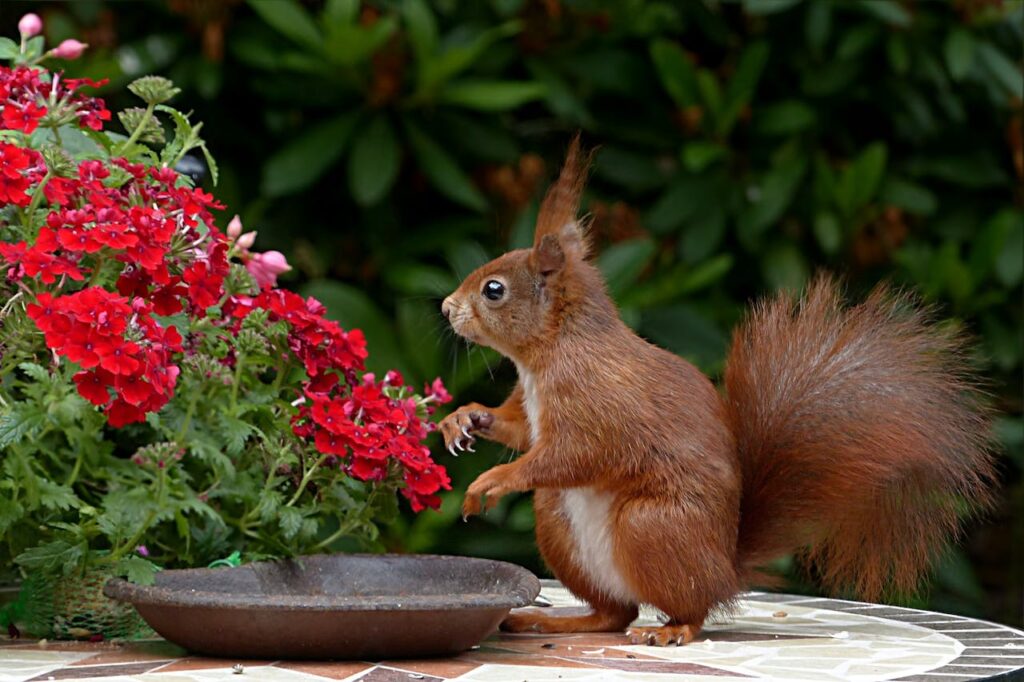A garden full of chirping birds, buzzing bees, and fluttering butterflies can make any outdoor space more lively and enjoyable. Attracting wildlife to your garden not only enhances its beauty but also supports biodiversity. Welcoming wildlife helps create a balanced ecosystem where plants and animals thrive together.
To invite these delightful guests, your garden needs to offer the essentials: food, water, and shelter. Thoughtful landscaping can transform your outdoor area into a sanctuary where creatures feel safe and at home. By choosing the right plants, you can provide nourishment and a habitat for small animals and insects.
Creating these conditions encourages beneficial wildlife to visit and stay. From watching birds bathe in a backyard pond to hearing frogs at night, the presence of wildlife adds charm and vitality to your garden. With a few easy steps, you can build a garden that supports wildlife while enriching your own outdoor experience.
Creating Natural Habitats with Landscaping
Landscaping plays a crucial role in attracting wildlife to your garden. By designing natural habitats, you create spaces where birds, insects, and small animals can live and thrive. The key is to mimic the natural environments these creatures are accustomed to, providing shelter and protection.
Start by using native plants and trees that local wildlife are familiar with. Native plants tend to attract more local fauna because they offer food and shelter that animals are used to finding. Group different types of plants closely together to form dense foliage, creating hidden spots for birds to nest and insects to hide.
Consider adding features like rock piles and fallen logs, as they serve as ideal hiding places for many small creatures. A little messiness is good here—think piles of leaves or a brush pile. These features can house countless tiny critters, adding to the biodiversity of your garden.
Here are some simple ideas for creating habitats:
– Plant dense shrubs and tall grasses for cover.
– Build rock piles or small log stacks for shelter.
– Leave a pile of leaves for insects and small mammals.
By crafting these natural habitats, you invite wildlife to settle in your garden, enhancing its vibrancy and ecological balance.
Providing Food and Water Sources
A reliable source of food and water is essential for drawing wildlife to your garden. From birds and butterflies to squirrels and bees, a variety of creatures depend on these necessities to survive. Offering diverse food sources helps attract different wildlife to your garden.
Bird feeders filled with seeds can invite a variety of feathered friends. Choose feeders and seeds appropriate for your local bird species. Nectar plants like flowers can be a great source of food for butterflies and hummingbirds. These plants not only provide nourishment but also add splashes of color to your garden.
Water sources are just as important as food. A birdbath can attract birds not only for drinking but also for splashing around. Small ponds or shallow bowls can entice frogs and other amphibians. Be sure to keep these water sources clean and refill them regularly to maintain a healthy environment.
Here’s a handy list for food and water options:
– Set up a bird feeder with seeds.
– Plant nectar-rich flowers for pollinators.
– Install a birdbath or small garden pond.
By supplying food and water, you welcome various wildlife into your garden, making it a bustling habitat teeming with life and activity.
Choosing Plants That Benefit Wildlife
Selecting the right plants is crucial for creating a wildlife-friendly garden. Different species attract various types of wildlife by providing food and shelter. When choosing plants, consider those that cater to the needs of local animals and insects.
Focus on native plants because they are adapted to the local climate and soil, making them an excellent choice for sustaining wildlife. They often require less maintenance and attract native pollinators like bees and butterflies. For birds, consider berry-producing bushes, such as elderberry or serviceberry, which offer nourishment and nesting material.
Variety is important too. By planting a mix of flowers, shrubs, and trees, you create layers within your garden. This multi-layered approach gives access to different heights and spaces, accommodating a variety of wildlife. Evergreen plants can provide year-round cover, while flowering plants offer seasonal food sources.
Here are some plant suggestions for your wildlife garden:
– Wildflowers like coneflower and aster for insects.
– Berry bushes like elderberry for birds.
– Native grasses for ground-nesting wildlife.
Choosing the right plants creates a supportive environment for wildlife, encouraging more animals to visit and thrive in your garden.
Maintaining a Safe and Welcoming Environment
To ensure your garden stays a haven for wildlife, ongoing maintenance and safety measures are essential. A welcoming environment means your garden is free from threats and changes that could disrupt its wildlife inhabitants.
Avoid using chemicals like pesticides and herbicides. These can harm both plants and the wildlife you’re trying to attract. Instead, apply natural pest control solutions, such as introducing beneficial insects or using homemade remedies. Keep an eye out for any hazards, like sharp branches or debris, and remove them promptly.
Regular trimming and pruning help keep plants healthy and manageable. This also prevents small animals from getting hurt by overgrown or hazardous plant parts. Provide safe spaces like birdhouses or insect hotels, giving creatures a place to rest and reproduce.
To maintain a safe garden:
– Use natural alternatives to pesticides.
– Regularly trim and prune plants.
– Create shelters like birdhouses.
By maintaining a safe and welcoming environment, your garden remains an inviting space for wildlife all year round.
Conclusion
Creating a wildlife-friendly garden doesn’t have to be complicated, but it does require thought and care. By incorporating natural habitats, food and water sources, and selecting appropriate plants, you can turn your garden into a lively sanctuary. Regular maintenance ensures this space remains safe and welcoming for the creatures you wish to attract.
Your efforts not only contribute to the environment but also provide countless moments of joy and discovery as you observe the wildlife enjoying your handiwork. Every creature that visits enhances the ecosystem of your garden, bringing it to life in vibrant ways. Embracing biodiversity in your outdoor space enriches your life as well as that of the local wildlife.
Eager to make your garden a paradise for wildlife? At One Two Tree, a landscape contractor in Marietta, GA, we specialize in creating inviting landscapes that support diverse ecosystems. Our services help you design and maintain a garden that draws wildlife to your doorstep, enriching both your outdoor space and your experience. Reach out to One Two Tree and start transforming your garden today.

